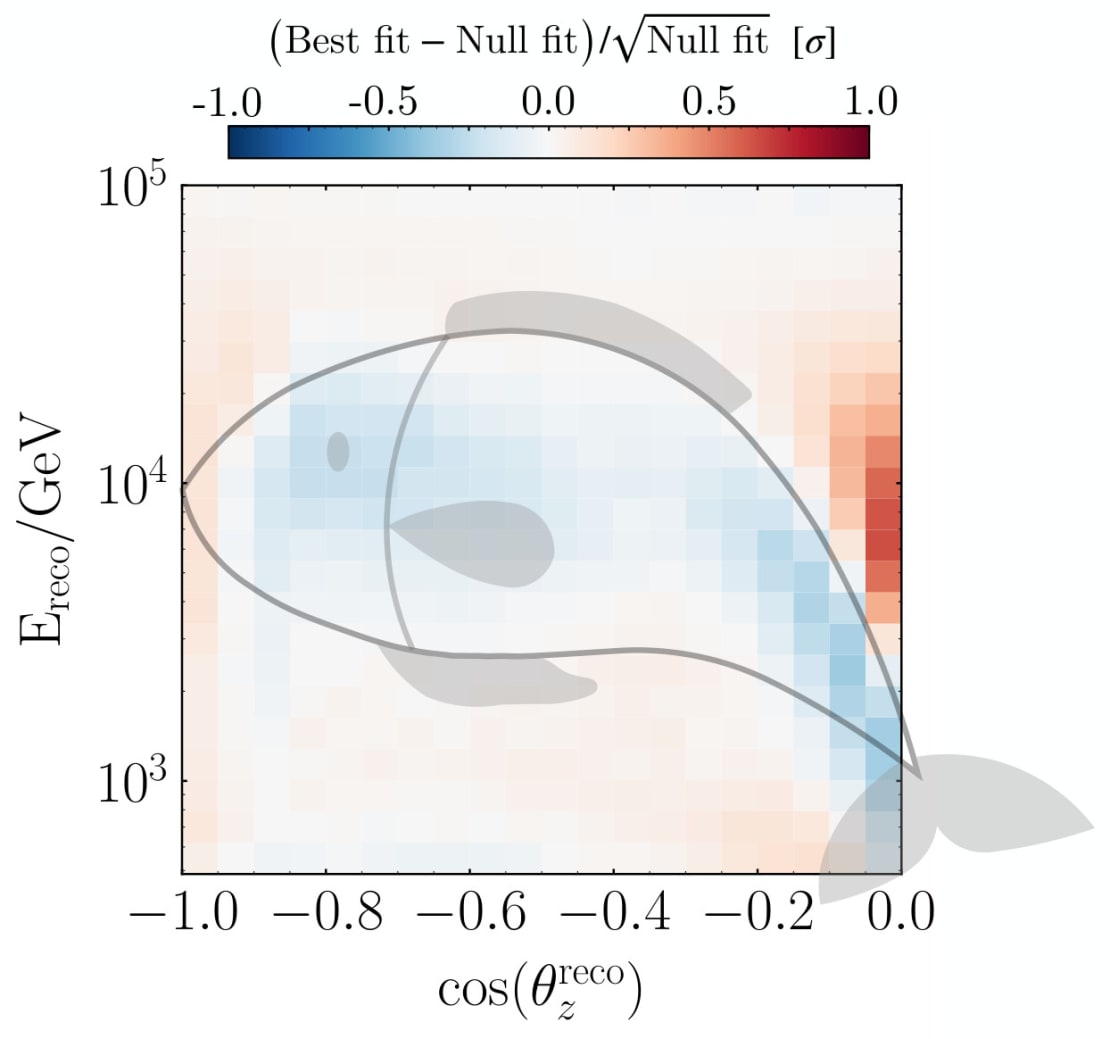Neutrinos are tiny “ghostlike” particles that traverse long distances across the universe, interacting with matter only through the weak force. They come in three different types or “flavors”—electron, muon, and tau—and during their journey through the atmosphere and the Earth can transform from one flavor to another. This phenomenon, called neutrino oscillation, is a subject of intense investigation at the IceCube Neutrino Observatory at the South Pole.
Some searches have attempted to challenge the standard three-flavor framework, with physicists proposing the existence of a fourth neutrino state known as the sterile neutrino. For the past 20 years, scientists have searched for this elusive particle.

Unlike the other flavors, the sterile neutrino is “blind” to weak forces and possesses a heavier mass. However, the existence of an additional neutrino state could attenuate the flux of muon neutrinos produced by accelerators in the GeV energy range; yet this effect has not been experimentally confirmed. Known as the “3+1” neutrino puzzle, physicists have thus far been unable to put the puzzle pieces together.
In a new analysis, the IceCube Collaboration carried out a 3+1 sterile neutrino search using over 10 years of IceCube data of atmospheric muon neutrinos in the 0.5-100 TeV energy range. The results of this work do not support the existence of a sterile neutrino and are consistent with previous findings by IceCube. These findings are presented in a study submitted today to the journals Physical Review Letters and Physical Review D,
with acceptance as an “Editors’ Suggestion” by Physical Review Letters.


Unlike lower energy atmospheric neutrinos that easily oscillate, a TeV muon neutrino would need to journey over 500,000 kilometers—more than 40 times the Earth’s diameter—before it is expected to oscillate. As such, the atmospheric neutrino flux is expected to remain unaffected at higher energies. However, the presence of sterile neutrinos can be inferred from disruptions in the flux at TeV energies.
“One key improvement in this study is a major revision in the modeling of systematic uncertainties associated with the neutrino flux and Antarctic ice properties,” says Alfonso Garcia, a former Marie Skłodowska-Curie fellow at Harvard University and lead on the study. ”Another advancement involves adopting machine-learning-based reconstruction algorithms to reconstruct neutrino interactions, including an algorithm that enables us to differentiate between neutrino interactions occurring inside and outside IceCube.”
The method, based on convolutional neural networks, allowed researchers to separate starting (start inside IceCube) and throughgoing (start outside IceCube) events, presenting the first time two distinct event morphologies were examined for this type of analysis. From there, researchers tested predictions for sterile neutrino manifestation through vacuum or matter-enhanced oscillations, which depend on the direction of the incoming neutrino.

“These findings reaffirm the pivotal position of IceCube within the broader search for understanding the sterile neutrino model,” says Janet Conrad, a professor at the Massachusetts Institute of Technology. ”The examination of the muon neutrino spectrum at TeV energies is proving to be a crucial approach in the ongoing search for sterile neutrinos.”
It will continue to be a fruitful approach long into the future. With the ongoing IceCube Upgrade and the planned IceCube extension IceCube-Gen2, these enhancements will further aid in the pursuit of elusive sterile neutrinos.
“This result is a major piece of the puzzle in the decades-long mystery surrounding the potential existence of new, light neutrinos,” says Carlos Argüelles, an assistant professor at Harvard University. “In particular, the region around one eV-scale mass in the muon-neutrino parameter space warrants further exploration as this channel is key in establishing or rejecting a new, sterile neutrino.”
*UPDATE 10/21/24: A new version of the article mentions the paper’s acceptance as an “Editors’ Suggestion” by Physical Review Letters and includes a new graphic.
+ info “A search for an eV-scale sterile neutrino using improved high-energy νµ event reconstruction in IceCube,” IceCube Collaboration: R. Abbasi et al. Submitted to Physical Review Letters. arxiv.org/abs/2405.08070 and “Methods and stability tests associated with the sterile neutrino search using improved high-energy νµ event reconstruction in IceCube,” IceCube Collaboration: R. Abbasi et al. Submitted to Physical Review D. arxiv.org/abs/2405.08077